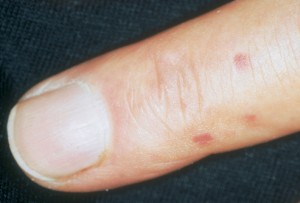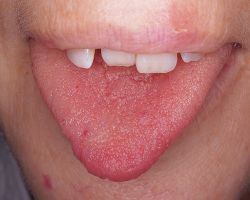Hereditary Hemorrhagic Telangiectasia Definition
Page Contents
- 1 Hereditary Hemorrhagic Telangiectasia Definition
- 2 Hereditary Hemorrhagic Telangiectasia Incidence
- 3 Hereditary Hemorrhagic Telangiectasia Causes
- 4 Hereditary Hemorrhagic Telangiectasia Genetics
- 5 Hereditary Hemorrhagic Telangiectasia Inheritance
- 6 Hereditary Hemorrhagic Telangiectasia Symptoms
- 7 Hereditary Hemorrhagic Telangiectasia Diagnosis
- 8 Hereditary Hemorrhagic Telangiectasia Differential Diagnosis
- 9 Hereditary Hemorrhagic Telangiectasia Treatment
- 10 Hereditary Hemorrhagic Telangiectasia Prognosis
- 11 Hereditary Hemorrhagic Telangiectasia Complications
- 12 Hereditary Hemorrhagic Telangiectasia Life Expectancy
- 13 Hereditary Hemorrhagic Telangiectasia Prevention
- 14 Hereditary Hemorrhagic Telangiectasia Images
Hemorrhagic Telangiectasia Definition (HHT) is an inherited condition which results in the formation of abnormal blood vessels known as arteriovenous malformations (AVM) in different areas in the body including the mucous membranes, skin and in organs like the liver, lungs and brain. When growing on the skin, these blood vessels can be referred to as telangiectasias.
The disorder is also referred to as Osler-Weber-Rendu Syndrome and Osler-Weber-Rendu Disease.
Hereditary Hemorrhagic Telangiectasia Incidence
It is difficult to determine the incidence of HHT because mild cases of the syndrome may go unnoticed due to lack of evident symptoms. In addition, AVMs may be related with some other disorder. Studies show HHT to be a fairly common condition, occurring in 1 out of every 5,000 to 10,000 people. According to its prevalence statistics, it can affect people from various ethnic groups all over the world.
Hereditary Hemorrhagic Telangiectasia Causes
Genetic mutations are the main trigger factors for this syndrome. The defective gene is inherited by an individual from one of his or her parents. It can also result from new mutations in certain genes. However, the factors that trigger these mutations are not known.
Hereditary Hemorrhagic Telangiectasia Genetics
Mutations in the ENG or ACVRL1 genes are responsible for over 80% of the total cases of HHT. More than 600 different mutations in the gene are known. MADH4 gene mutations, which also results in colonic polyposis along with HHT, is the main cause behind the condition in about 2% of the total cases. It is still not clearly known whether mutations in the ENG and ACVRL1 genes, apart from the MADH4 mutations, lead to any specific symptoms.
According to some case reports, ENG mutations increase the risk of lung cancer while mutations in ACVRL1 gene may result in serious liver problems and pulmonary hypertension. Researches show that people having the same gene mutations often have different symptoms with various severity levels. This suggests the possible involvement of some other risk factors and gene mutations which have not been identified.
Hereditary Hemorrhagic Telangiectasia Inheritance
The disease follows the autosomal dominant inheritance pattern, meaning that only one copy of the defective gene is enough to cause the disorder. Individuals suffering from HHT are at 50% risk of passing on the mutation to their offspring. However, it can be caused by new gene mutations in people with no family history of the condition.
Hereditary Hemorrhagic Telangiectasia Symptoms
The symptoms of HHT depend on the location of the arteriovenous malformations. AVMs in the internal organs result in more serious symptoms than telangiectasias on the skin. The common signs of this disorder include:
- Nosebleeds in children
- Port Wine Stain
- Gastrointestinal bleeding including bloody or dark stools
- Abnormal blood vessels on the throat, airways and bowels (that easily bleed)
- Sudden seizures
- Shortness of breath
- Unexplained, minor strokes (due to bleeding into brain)
- Iron deficiency anemia
- Heart failure
Hereditary Hemorrhagic Telangiectasia Diagnosis
Physical examination is very important for diagnosing HHT. Doctors also study the medical history of patients and look for red spots on the skin, especially on the upper body parts. The spots commonly occur in the nose and mouth as well as under the tongue. In most cases, the patient has a family history of HHT. The diagnostic criteria for the disorder include:
- Repeated epistaxis (nosebleeds)
- Mucocutaneous telangiectasia, especially on the hands and lips
- Internal AVMs
- Having a close relative with HHT
Various diagnostic tests are used for making and confirming this diagnosis:
- Blood tests
- Blood gas tests
- Endoscopy
- Echocardiogram
- Brain MRI (Magnetic Image Resonance)
Genetic testing is sometimes used for detecting any alteration in the genes associated with the syndrome.
Hereditary Hemorrhagic Telangiectasia Differential Diagnosis
The differential diagnoses for this condition include isolating its symptoms from those of similar disorders like:
- Crest syndrome
- Cockayne Syndrome
- Ataxia-telangiectasia
- Actinic Keratosis
- Dermatomyositis
- Louis-Bar syndrome
- Essential telangiectasia
- Scleroderma
- Rothmund-Thomson syndrome
Hereditary Hemorrhagic Telangiectasia Treatment
The treatment mainly focuses on treating the symptoms rather than the disease itself as it is not possible to cure the syndrome. The mild cases of HHT generally do not require any treatment. But in the moderate and severe cases, timely treatment is required to avoid various serious health problems like a stroke resulting from AVMs in the lungs.
There are various treatment options for the management of different symptoms:
- Acute bleeding can be treated with blood transfusion and other attempts to stem the blood flow.
- Laser coagulation therapy can also be used for treating nosebleeds.
- Another treatment used for severe epistaxis is septal dermoplasty or nasal septum skin transplant.
- The skin lesions resulting from the syndrome can be cured with dye laser surgery or cautery. This procedure is generally carried out by a dermatologist.
- Iron replacement therapy is useful for the management of anemia resulting from the GI bleeding. A doctor may consider endoscopic treatments and blood transfusion in case the iron replacement fails to relieve the symptoms.
- AVMs in the brain and some other parts of the body can be treated with endovascular embolization.
- Estrogen therapy can successfully reduce the episodes of bleeding in some patients.
- Stereotactic Intracranial Radiosurgery or liver transplantation may be necessary in severe cases of the condition.
- Sometimes, surgery is necessary to stop bleeding in certain areas.
Hereditary Hemorrhagic Telangiectasia Prognosis
HHT is a lifelong disease. Proper treatment, along with regular follow-up, allows its patients to lead a normal life by keeping the symptoms under control. However, patients continue to suffer from occasional periodic disability due to bleeding from some specific body parts or some serious complication.
Hereditary Hemorrhagic Telangiectasia Complications
This syndrome can cause several complications, some of which can even be life-threatening. Thirty to sixty percent of all patients are likely to have liver involvement while twenty-five percent to thirty percent tend to suffer from gastrointestinal bleeding. Around ten to twenty percent of the HHT patients tend to have CNS (central nervous system) involvement.
Other possible complications include the following:
- Heart failure
- Pulmonary hypertension
- Shortness of breath
- Internal bleeding
Hereditary Hemorrhagic Telangiectasia Life Expectancy
Usually, HHT does not affect the life expectancy of its patients. In severe cases, however, the abnormal blood vessels may lead to serious complications and even the death of sufferers. The condition is associated with a ten percent mortality rate where individuals with the syndrome eventually die due to the complications resulting from the disease.
Hereditary Hemorrhagic Telangiectasia Prevention
Couples having a family history of HHT should consider genetic counseling before having a child, as it helps to assess the chances of the baby being born with the disorder. It is not possible to prevent it when caused by new gene mutations due to the unknown etiology. The stroke and heart failure caused by the arteriovenous malformations can be prevented by proper medical treatment.
Hereditary Hemorrhagic Telangiectasia Images
Here are some pictures displaying the AVMs associated to the condition on different skin areas.
Picture 1 – Hereditary Hemorrhagic Telangiectasia
 Picture 2 – Hereditary Hemorrhagic Telangiectasia Image
Picture 2 – Hereditary Hemorrhagic Telangiectasia Image
HHT is a common genetic condition which requires early diagnosis and timely treatment. A number of foundations and organizations have been formed to provide accurate information and proper guidelines associated to this disorder.
References:
http://health.nytimes.com/health/guides/disease/osler-weber-rendu-syndrome/overview.html
http://www.healthofchildren.com/G-H/Hereditary-Hemorrhagic-Telangiectasia.html
http://emedicine.medscape.com/article/2048472-treatment
http://ghr.nlm.nih.gov/condition/hereditary-hemorrhagic-telangiectasia
http://www.patient.co.uk/doctor/Osler-Weber-Rendu-Syndrome.htm

